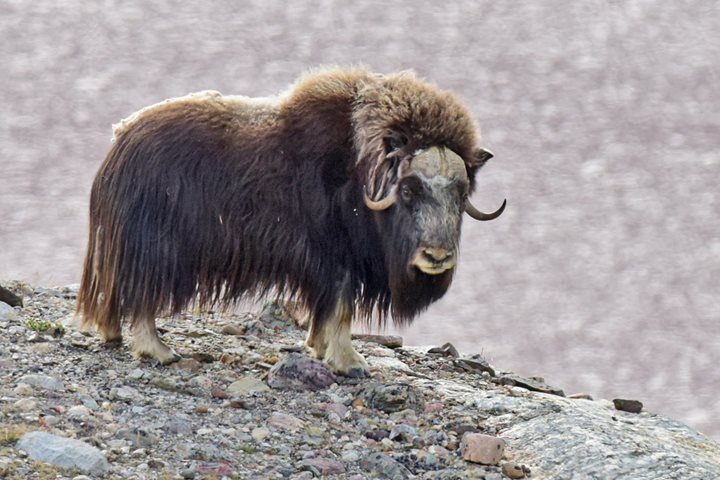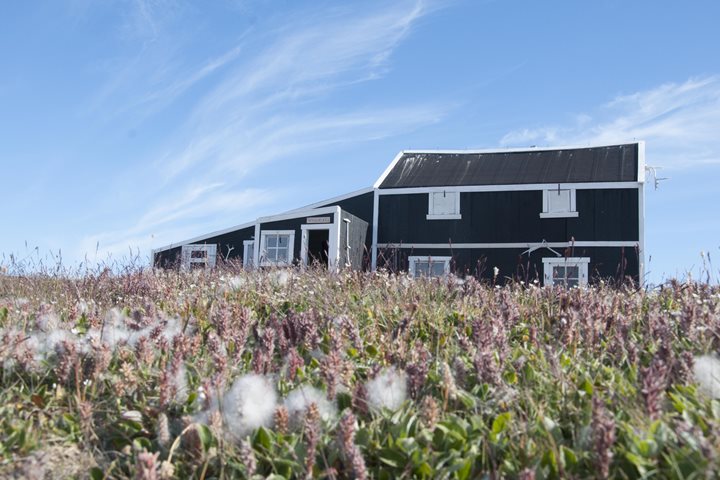The direction of our expedition took an unexpected turn today. It began like many others during this voyage, calm with blue skies reflecting off a glassy sea. The only difference was the presence of our new companion, the Pierre Radisson, a 13,000hp Canadian Coast Guard ice breaker which joined us last night in preparation for our transit into the ice-choked waters of Peel Sound. Only the nine-mile-long, one-mile-wide Bellot Strait to our west lay between us and the ice ahead. Before our morning transit the Pierre Radisson sent a helicopter ahead to scout our route in search of easier pathways through the ice. A band of fog to the west of Bellot thwarted these efforts however, leaving us reliant on the digitized ice charts at our disposal.
Westward we go.
Snaking our way through the five-knot current dividing Somerset Island and the extreme northern tip of North America, we spotted multiple herds of musk ox on the rocky slopes, verdant green hillsides beneath bird colonies, and fleeting, yet highly anticipated looks at a small pod of narwhals working the turbulent sections of the strait. Before long, the western edge of the Bellot was in view as well as the ice edge and its associated fog bank.
Over two years of preparation and planning has gone into this voyage and here we are, finally faced with the moment of truth. 180 nautical miles of thick first-year sea ice (3-4 feet thick) and patches of multi-year floes (over 6 feet) lay between the Pierre Radisson, ourselves, and open water to the south. Well into lunch we continued to rattle our way behind our Canadian ice breaker escort until everything suddenly came to a stop. Unsuspecting, many continued on with their meals, but communication on the bridge had suddenly increased with the Radisson. Every effort from our captain, Leif Skog, to inch forward was met with resistance as the sheer size of this ice floe prevented any wiggle room for our vessel to maneuver. With radio traffic now flying between ships the Radisson sprang into action. Into reverse she went pulling away from the thicker floe in a crescendo of splintering ice, prop-wash and the power of 13,000 horses. After a couple of passes she was once again in the lead and we were on our way once more.
What wasn’t immediately obvious, however, was that National Geographic Explorer was no longer being led into new directions. For the past 24 hours every stretch of our journey was uncharted territory for us, a true expedition. With the prospect of another 150 miles of similar ice to the south the decision was made to turn around and continue in the direction we came.
On to plan B we go, in the true spirit of adventure.
We will spend our remaining days looking to the east and north for adventure and save Kugluktuk and the western portion of the Northwest Passage for another voyage. For the time being we have retreated back to the western end of Bellot Strait, where we will remain in the thinner ice until tomorrow morning. This decision has played out perfectly, as not only has a calm, peaceful evening replaced the excitement of the day but, from the distance, a young, curious bear just crunched its way across the frozen sea directly to our bow. Standing repeatedly on its hind legs it seemed to be testing the limits of its surroundings, realizing in the end, as we did today, that some challenges are best left for another time.







